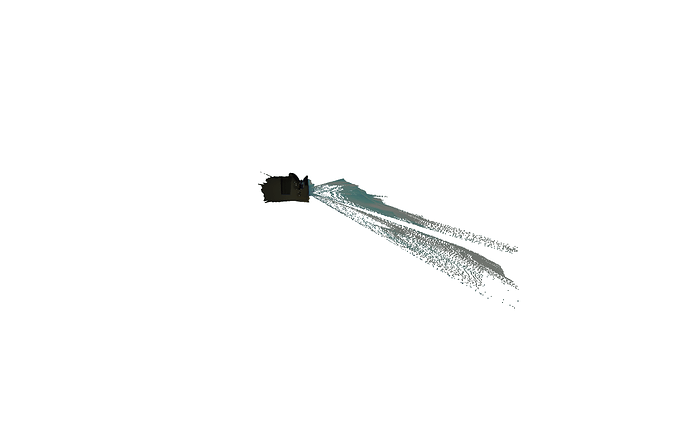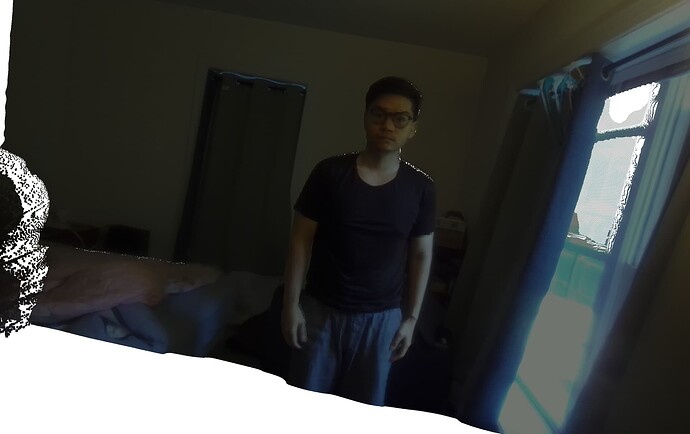Thank you for your reply. Then how can I let the meshlab knows the correct position of the camera? My camera is fixed so its extrinsic should be 0 (or near 0). I used to run the follwing code for generating point cloud of human body from a RGB-D sensor that rotates around the human. And the point cloud generated from this code has the correct initial camera position in MeshLab. But I don’t know how to apply this by using Zed SDK. Could you help me this?
Moreover, I would like to ask why the point cloud generated from zed has a long sparse “shadow”? It should not be there and makes the center of point cloud totally devaite from the correct position.
def generate_pcl(data_root):
print('Generating colored point clouds...')
print('Loading {}'.format(data_root))
sub_folder_list = sorted(os.listdir(data_root))
for sub_folder in sub_folder_list:
if not os.path.isdir(os.path.join(data_root, sub_folder)):
continue
print('Processing sequence: {}'.format(sub_folder))
render_image_list = sorted(
glob.glob(
os.path.join(data_root, sub_folder, 'render', 'image',
'*.png')))
render_depth_list = sorted(
glob.glob(
os.path.join(data_root, sub_folder, 'render', 'depth',
'*.tiff')))
cam_infos = np.load(
os.path.join(data_root, sub_folder, 'render', 'cameras.npz'))
data_dir = os.path.join(data_root, sub_folder, 'pcl')
os.makedirs(data_dir, exist_ok=True)
for i in tqdm(range(len(render_image_list))):
cam = o3d.camera.PinholeCameraIntrinsic()
cam.intrinsic_matrix = cam_infos['intrinsic']
cam_ext = cam_infos['extrinsic'][i]
rgb_raw = cv2.imread(render_image_list[i])
rgb_raw = cv2.cvtColor(rgb_raw, cv2.COLOR_BGR2RGB)
depth_raw = np.array(Image.open(render_depth_list[i]))
depth_raw[depth_raw>10] = 0
depth_raw = o3d.geometry.Image(depth_raw)
full_pcd = o3d.geometry.PointCloud.create_from_depth_image(
depth_raw,
intrinsic=cam,
extrinsic=cam_ext,
depth_scale=1000,
project_valid_depth_only=False)
temp = np.array(full_pcd.points)
temp = np.nan_to_num(temp)
temp = temp.reshape((np.array(depth_raw).shape[0],
np.array(depth_raw).shape[1], 3))
valid_2d_pixels = np.array(
np.where(np.any(temp, axis=2) == True)).transpose()
temp = temp[valid_2d_pixels[:, 0], valid_2d_pixels[:, 1], :]
temp = temp.reshape((-1, 3))
tmp_color = rgb_raw[valid_2d_pixels[:, 0], valid_2d_pixels[:,
1], :]
tmp_color = tmp_color.reshape((-1, 3)) / 255.0
pcd = o3d.geometry.PointCloud()
pcd.points = o3d.utility.Vector3dVector(temp)
pcd.colors = o3d.utility.Vector3dVector(tmp_color)
pcd.estimate_normals(
search_param=o3d.geometry.KDTreeSearchParamHybrid(radius=0.1,
max_nn=30))
cam_C = -np.linalg.inv(cam_ext[:3, :3]) @ cam_ext[:3, -1]
center_sphere = o3d.geometry.TriangleMesh.create_sphere(radius=0.2)
center_sphere.translate((cam_C[0], cam_C[1], cam_C[2]))
o3d.geometry.PointCloud.orient_normals_towards_camera_location(
pcd, camera_location=cam_C)
# o3d.visualization.draw_geometries([pcd, center_sphere])
frame_id = render_image_list[i].split('/')[-1].split('.')[0][-5:]
o3d.io.write_point_cloud(
os.path.join(data_dir, f"pcl-f{frame_id}.ply"), pcd)

